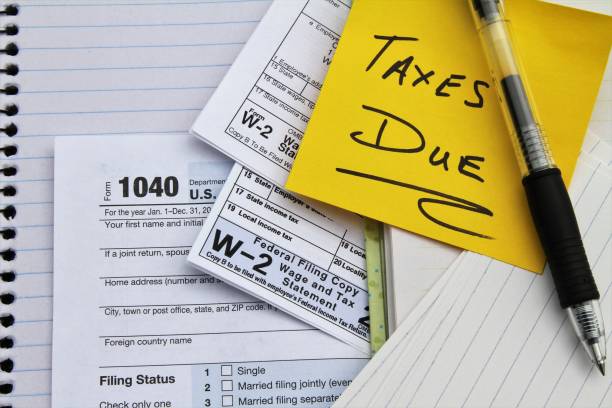Did you receive an unexpected tax bill this year? If so, you’re not alone. Many taxpayers were caught off guard when filing their taxes. It’s very tempting to ignore the tax bill, but that doesn’t solve the problem. Eventually, the IRS will catch you and you should expect heavy fines and penalties. If you continue to ignore payment reminders, your taxes can be seized and confiscated or even deducted from your wages. However, if you are unable to pay your taxes in full, there are four things you can do now to pay your back taxes and avoid trouble with the IRS.
Apply for a payment plan
The IRS offers a number of payment plans and installment agreements to help you pay your tax debt over time. The two most popular are.
- Short payment plan. This works well if you can pay your tax debt in six months (180 days). Apply online or by phone. There is no application fee. However, penalties and interest are due until the balance is paid in full.
- Installment Payment Agreements. An installment agreement is also called a long-term payment plan, which allows you to pay off your debts over several months or years. To request an installment plan, you can fill out Form 9465 “Request to Set up an Installment Plan” online or call us. Unlike short-term payment plans, the fee depends on how you apply and how you make your monthly payments.
Before you apply for either payment plan, you should make sure you have up-to-date information about your tax situation. If you are in open bankruptcy or have unpaid taxes, the IRS will likely deny your application.
Make sure an offer in a compromise plan is appropriate
Another way to handle unpaid taxes is to make an offer in compromise (OIC); and OIC can help you settle for a lower tax bill. However, you must prove that paying the tax in full would put you in extreme financial hardship. The tax authorities will consider certain factors when reviewing your application.
- Ability to pay tax
- Income
- Expenses incurred
- Equity
If the OIC amount is equal to or greater than the amount the IRS believes you can get, the IRS will likely accept your settlement offer. You can choose between a one-time payment (to be paid in five installments or less) and a recurring payment (to be paid in monthly installments). You must also pay an application fee of US$205 and attach the originally paid application to your file.
Request a “Currently Not Collectible ” status
If you cannot pay at all, you may have the option of requesting CNC (Currently Not Collectible) status. This does not reduce or eliminate your existing tax debts, but you can get a much-needed payment facility until you are in a better financial position. No formal application is necessary; to apply for CNC status, fill out Form 433-A or 433-F.
As long as you have CNC status, the IRS will not garnish your account or withhold your wages. However, future tax refunds will be deducted from your debts. The tax authorities also audit your accounts annually. If there are significant changes, collection may be resumed; if you remain in CNC status and the statute of limitations expires, your tax debt may be forgiven.
Seek advice from a tax advisor
While you can apply for a payment plan, OIC, or CNC status yourself, it may be helpful to seek advice from a tax professional. For each of these programs, there are individual admission requirements and application procedures. Some, such as OIC and CNC, also require detailed financial disclosure. Experienced tax professionals, such as Tax King Service, can help you determine which program is right for you. They can also walk you through the process and increase your chances of getting approved.
About Author
Villie Walters Ramirez is a 32-year-old tax consultant at a taxation firm. Who enjoys accounting, bookkeeping, and Bronx tax audit solutions. She has a post-graduate degree in accounting, and she has a severe phobia of cats. She enjoys traveling a lot.
